Pimples inside nose: the complete guide
Pimple (sometimes also called a zit, bump or spot) is a type of comedo or acne. Comedo is caused by clogging of hair follicle (pores) in the skin. Skin debris mixes with oil to clog the follicle. The follicles have sebaceous glands inside them that produce sebum. As the outer layer of skin sheds continuously, the dead skin cells after glued together by sebum causes the follicles to block. This generally happens when person’s skin becomes thick at puberty.
What causes pimples inside nose?
Sebum is continuously produced by sebaceous glands but it builds up behind this blockage of follicles. As this sebum contains many bacteria like the species of Propionibacterium Acnes that result in infection and inflammation (1, 2). Pimples are the most common of all the problems that affect both adults and teenagers (3). Although having pimple is common among teenagers during puberty (due to their surging hormones) but sometimes adults also suffer from them even in their thirties. Pimples are of many types some of which are as follows (4):
- White heads
- Black heads
- Papules (liquid filled pimples)
- Pustules (pus filled pimples)
- Nodules (deep pimples - usually filled with solid elements - debris, parts of cell membranes, etc.)
- Cysts (deep pimples - liquid or pus filled).
The pimples are differentiated into whiteheads and blackheads on their degree of inflammation. They are both the same with the exception that whiteheads leave the tip of follicle plug white whereas in the case of blackheads the cells plugging the follicle oxidize turning into a black material. Dirt does not causes blackheads and washing them off with soap, water, cleaning agents and even frequent scrubbing can worsen the condition.
Pimples inside the nostrils are much different from those on the outer layer of skin. It is most commonly a case of localized folliculitis due to primary bacterial infection but it may also be caused secondarily due to other conditions of nose or sometimes systemic conditions and also due to some foreign body that blocks the ducts of glands leading to blockage and inflammation. Most commonly it is gram positive bacteria that causes such pimples. This generally occurs due to long term use of acne antibiotics. This results in overgrowth of gram positive bacteria inside the nose.
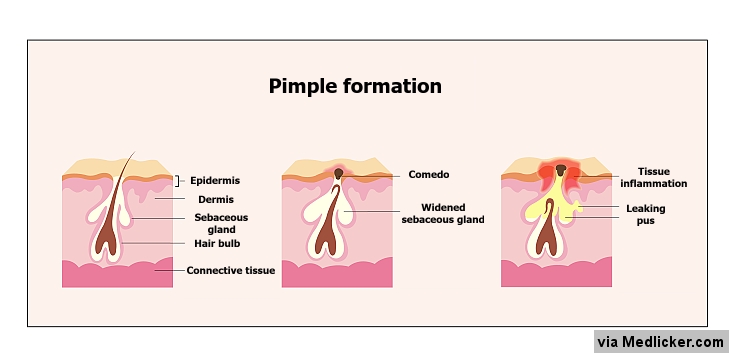
The reason for it normally is the imbalance of the bacteria populating inside one’s nostrils. Pimples inside the nose are related to chronic antibiotic use that while killing all the good bacteria and leaving behind the bad ones result in infection. Staphylococcus is another species of bad bacteria that causes pimples inside the nostrils. There are also other bacteria in nose and mucous membrane causing pimples. Pimples inside the nose are difficult to locate. Infection is deep rooted and sebum inside also forms cyst by hardening. The cyst causes blockage exacerbation and condition usually worsens.
Folliculitis
Folliculitis is one of the most frequent causes of zits (not just inside nose but also on chin or elsewhere on the skin) (5). This condition of skin that causes hair follicles to get inflamed. Normally it is caused by bacteria or fungal infection. At first they may look like red bumps or whitehead pimples but if the infection spreads they can turn into crusty sores. Not life threatening but still can be very itching, sore and embarrassing. The bacteria responsible for folliculitis is called Staphylococcus Aureus. However folliculitis may also be caused by viruses, fungi, inflammation and in-grown hair. There are two types of folliculitis i.e.:
Deep Folliculitis
It is a type where whole hair follicles are involved. It has the following forms:
- Sycosis Barbae
- Gram Negative Folliculitis
- Boils and Carbuncles
- Eosinophilic Folliculitis
Superficial Folliculitis
This type includes the following forms:
- Barber's Itch
- Pityrosporum Folliculitis
- Hot tub Folliculitis
Infection
One of the possible causes for pimples either inside or outside nose is infection. At start this pimple is reddish and firm but with the infection continuing, it swells up resulting more pain, redness and filling up with pus.
General causes of the infection include:
- Pulling out the nose hairs
- Blowing nose too often
- Picking nose
All these result in mucosa lesions. These lesions allow the bacteria to break the natural defense barrier and cause infection. Pimples if grow bigger in size turn into boils or abscesses. These are collection of pus that is red, warm and sensitive to touch often accompanied with fever. Regional lymph nodes, which are the immune structures attacking the bacteria, can also become swollen due to this infection.
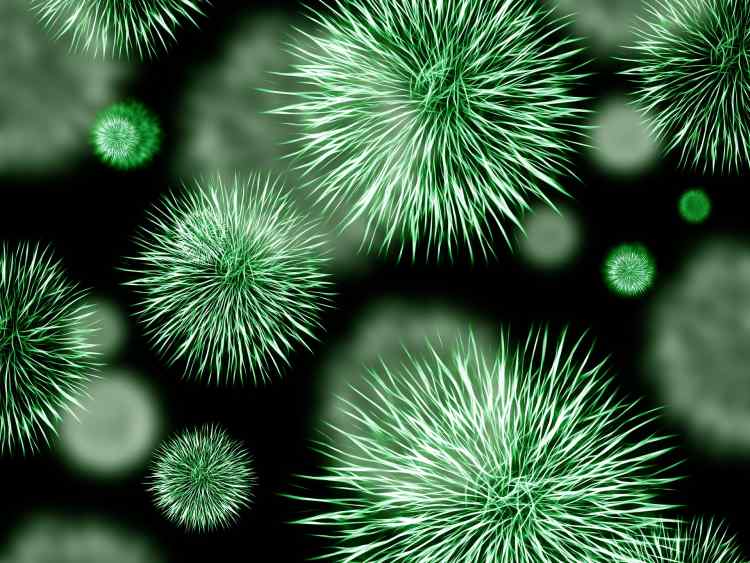
Sinusitis
Another cause of nose bumps might be sinusitis (6). This happens due to an allergic reaction or by an infection. This causes inflammation accompanied with clogging following excess mucous production.
Allergic rhinitis
Whenever we inhale dust, pollen, smoke or any other pollutants, it causes the mucosa inside the nose to swell. This allergic reaction is also a cause for the formation of pimples inside the nose due to the clogging in the hair follicles (7). Nose in this condition can become red, swollen and sensitive to touch, mainly when you sneeze.
Nasal polyps
Nasal polyps are also one of the causes for pimples inside the nose as they are similar to Sinusitis. Polyps are tear shaped growth inside the nose that may develop in association with allergic conditions and persistent stimulus. They can block the nasal passage and also the hair follicles resulting in pimples due to collection of mucous production.
Foreign body
Foreign bodies stuck inside the nostrils of children are a common causes of the pimple formation. These foreign bodies can be a bead or a toy. If they are stuck and remain undetected for few days, they can ultimately damage the mucosa resulting in the form of infection that in turns cause pimples. This leads to severe itching by the child, which causes further damage to the insides of nostrils.
Blockage of pores
One of the causes for pimples to form inside the nostrils is the blockage of pores due to the bacteria residing inside (8). Bacteria borne pimples are very difficult to treat because of one’s inability to change the environment inside the nose. Some of the bacteria that cause blockage of pores are Staphylococcus bacteria and gram negative bacteria.
Nose picking
Picking your nose can result in pimple formation. Sticking the fingers or any other object to scratch inside of your nose results in the damage to the sensitive nerve endings. This also causes broken capillaries and scratches. If they are left untreated they can get infected and form pimples.
Hair removal
Trimming the hairs inside the nose with scissors or pulling them with tweezers results in tiny nicks that can become infected with bacteria eventually turning into pimples. On the other hand, if these hairs are not removed carefully and become too long then these can get clogged in pores causing irritation and pimples formation.

These types of pimples are often problematic and very difficult to treat. The only solution is to observe nasal hygiene and avoid unnecessary pulling of hair inside the nostrils.
Irritants
Another cause of pimples is irritants from the air we breathe. We breathe in chemical propellants, dust and other irritants from our nose on daily basis. These irritants are absorbed by inside lining of the nose resulting a pimple formation within hours of exposure.
Hormonal disorders
Hormonal disorders in women are very common causes of the pimple formation inside nostrils (9).
Unhygienic surroundings
If you’re not in the habit of cleaning your nose regularly then it can lead to the attachment of viruses or bacteria to the nose lining ultimately turning into pimples. However, it must be remembered that cleaning the nose too violently can actually do more harm than good so be gentle with your nose.
Unhealthy lifestyle and stress
Believe it or not, unhealthy diet and high stress level is also one of the causes of pimple formation.
Eating unhealthy food aids in growing bacteria and similarly high level of stress disrupts the hormone cycle provoking pimples even inside nostrils.
Symptoms of pimples inside nose
Zits inside nose are generally associated with the following symptoms:
- Nose swelling
- Slight tenderness or throbbing pain
- Red, inflamed nose skin
- Sensation of itching and burning of skin
- Nasal obstruction a feeling that your nose is blocked
- Mouth breathing
- Impaired sense of smell
- Hot and fiery nose
Infected pimples may also trigger the following conditions:
- Fatigue
- High fever
- Headaches
- Malaise (feeling of uneasiness and discomfort)
How to prevent pimples inside nose?
If you suffer from any of the above symptoms then you are advised to see a doctor as soon as possible. Before you can go to your doctor, following are some of the preventions a person suffering from pimples inside nostrils should take to prevent further worsening of the problem.
- The first and foremost important thing is not to poke the insides of your nose with fingers or any other object. This often leads to bleeding and in turn to infection.
- Instead of blowing your nose very hard do it gently.
- To reduce the pain instead of poking you should apply ice packs in a zip lock bag or towel on the nose. This can be done for 15 – 20 minutes 3 times daily.
- Take pain killers like paracetamol or ibuprofen only after eating something to avoid stomach problems.
- Do not plug your nostrils by putting tissue or cotton.
- If the pimples are due to allergies or sinusitis, use of nasal sprays, nasal decongestants and antihistamines well advised. But if the problem persists after 3 days, get yourself checked by a doctor.
- Stop taking alcohol and also avoid smoking. These can aggravate the condition.
- To avoid triggering other allergic reactions refrain from inhaling dust, pollen or other such irritants. Use masks if you have to.
- Put an extra pillow under your head while sleeping. This will drain the mucous and will allow you to breathe comfortably.
- It is advised not to squeeze the pimples inside the nostrils. This practice can lead to further infection and aggravation of pain.
How to get rid of pimples inside nose: medical and natural treatment options
Pimples inside the nostrils are not that much of a risk and can be cured by simple home remedies and medicines at home. However, if the pain and swelling increases after few days of using nonprescription medications and home remedies then it is best advised to see a doctor for further diagnosis. The treatments and remedies for pimples inside the nostrils are as follows:
Medical drugs (pharmaceuticals)
Zits in nose can be cured by some topical over the counter medications. Topical means that the medicine should be applied on the surface of the pimple and not swallowed or injected. Most commonly used pharmaceuticals for treatment of pimples inside nose are (11):
- Benzoyl peroxide
- Resorcinol
- Salicylic acid
- Sulfur
- Azelaic acid
- Retin A
They are generally available as gels, lotions, and creams. Benzoyl peroxide kills bacteria and decreases oil production. Resorcinol, sulfur and salicylic acid help break the pimples. They also help reduce inflammation and swelling. Azelic acid strengthens cells that line your follicles and also reduces bacteria growth. Retin-A unplugs nasal pores by loosening the cells on skin surface. It is advised that you use low concentration of these medications and you should never use them without prior consent of your physician.
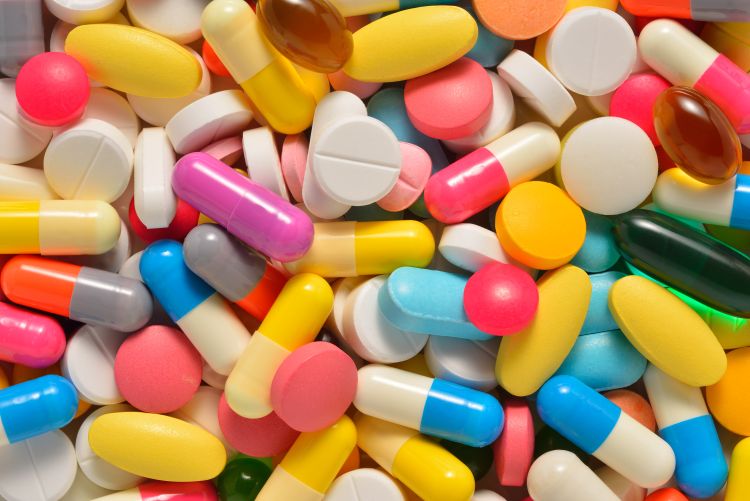
Be careful when using pharmaceuticals to deal with your zits as they may have some side effects. So always read the prescription details very carefully and if you experience any of the adverse reactions below, contact your physician immediately:
- Irritation of skin
- Burning
- Redness of skin
- Peeling
- Discoloration of skin
Another well known topical pimple medication is Mupirocin. It is to be applied with cotton swabs 5 to 8 times a day.
Sometimes your doctor will prescribe you oral or IV medication (usually antibiotics) to deal with pimples. Antibiotics help reduce inflammation and prevent sepsis but should not be taken for a long period and you should never combine topical and oral antibiotics (12). The most commonly used antibiotics for treatment of zits are Clindamycin, Erythromycin or Tetracycline (13). Again you should go and see your doctor before you take any antibiotics. They are prescription based drugs, which may only be used with prior consent and recommendation of your doctor.
Antibiotic treatment has some side effects, too. The most common adverse effects are:
- Gastrointestinal problems
- Allergies
- Liver problem
- Yeast infection
Doctor advice people with heart issues not to take Erythromycin with Terfenadine, Astemisole or Cisapride as it can worsen their situation. Similarly, Tetracycline is not to be taken with antacids that contain Calcium sodium or magnesium bi carbonates as these antacids decrease absorption of tetracyclin. Also Tetracycline MUST NOT be given to kids as it may impair their growth!
Personal lifestyle change program
Change your way of eating
The first step to your treatment program is to change your eating habits. Eating junk food might fill up your stomach but you are losing all the necessary vitamins and minerals essential for your body. Start eating fresh vegetables and fruits at least once every meal. Consider eating nuts as they are good source of minerals and also help the skin.
Water intake
Same as changing your eating habit, you need to improve your water consumption as well. Drink plenty of water to clear up your skin. This helps in prevention of dead skin cells to clog pores and form pimples. Avoid the use of carbonated beverages.
Probiotics
Probiotics are also very beneficial for your pimple treatment. Increase the level of probiotics instead of using antibiotics. Probiotics are good bacteria that body harbors naturally. Higher levels of probiotic bacteria can be achieved by eating honey, bananas, onions and artichokes.
Vitamin D
Vitamin D helps to clean your skin. The most efficient way for getting enough of this vitamin is to get maximum exposure to sunlight and fresh air.
Stress relieve
Stress is one of the main causes for pimple outburst. You need to relieve yourself from stress as it disrupts your hormones out of balance.

One of the best ways to relieve stress is to do exercise and yoga as these will increase the blood flow and health of your skin.
Avoiding the use of irritating cosmetics
When it comes to cosmetics, most of them have ingredients that clog your pores, which leads to pimples formation. Use products that have natural ingredients common example is Tea tree oil.
Home remedies for nose pimples
A simple way for the treatment of zits inside nostrils with five simple steps as mentioned below:
- Take a small saucepan with water and put it on a stove.
- Boil the water enough till it releases fair amount of steam.
- Stand over the boiling water so that steam can enter your nostrils. Take the steam for about 10 minutes. This helps in softening the skin around pimple.
- After this, lift your head up and press the pimple inside nose gently with a cotton swab. This pressure will release the trapped dirt and oil.
- Take a small drop of topical antibiotic on another cotton swab. Apply this ointment four times on the popped pimple as it will prevent further infections or inflammation.
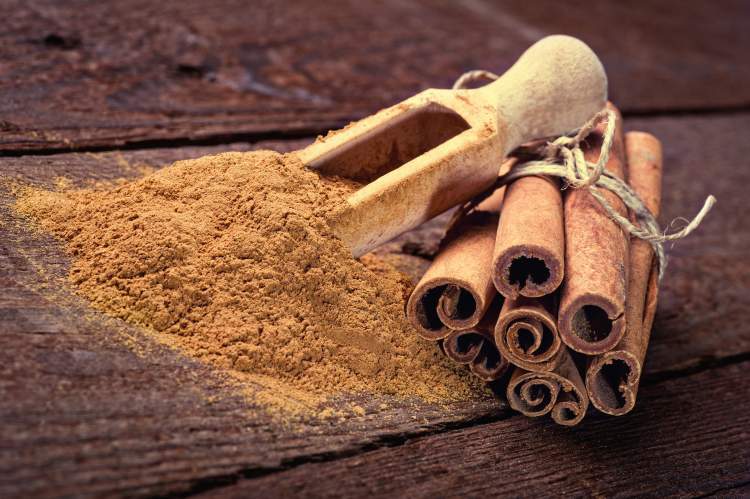
There are no studies confirming efficiency of home remedies for treatment of pimples inside nose. However some of these remedies have anti-inflammatory properties, which may be helpful in treatment of zits (14, 15). Here are some popular home remedies for nasal pimples:
- Fomentation of the outside of nostrils with warm water 2 to 3 times a day is a remedy. This helps the pimple to ripe and pop fast.
- Take some onion juice and apply it to the pimple each day until the pain is relieved. Onion juice is said to increase the healing.
- Take juices of lime (2 teaspoons) and bitter gourd (one glassful). Mix them and drink it for a few days, preferably with an empty stomach. This speeds up healing.
- Take clean cotton swabs and dip them in hot water. Apply these swabs on exterior of the nose. This not only eases the pain but also prevents accumulation of bacteria in that area.
- If the pimples are inflamed then use apple cider juice to apply on them. This reduces inflammation. Moreover, it restores the pH balance of the skin making it difficult for bacteria to thrive. Make a solution by adding three parts of water and one part of apple cider vinegar. Dip a cotton swab in this solution and apply it to the pimple. After few minutes rinse with warm water.
- Applying lemon juice onto the pimples helps killing the bacteria as a result of acidic ingredients of lemon juice. It contains high Vitamin C which is good for skin. Also being an astringent it dries pimples quickly. This also ensures that bacteria do not return. Lemon juice can be used by mixing it with ground nut oil. Apply gently on the pimples and before rinsing off with water let it dry for few minutes.
- Applying ice is also an effective method to reduce pain and inflammation. Ice helps improving blood circulation and also in freezing clogged skin pores. This freezing removes dirt and oil entrapped inside pores. Use a new piece of ice after interval of 15 minutes.
- A mixture of Sandalwood paste, baking soda, Aloe Vera, lemon juice and rose water is also a helpful home remedy for treating pimples. Apply this on the pimple with a clean swab of cotton. Aloe Vera and lemon juice kill the bacteria and the other ingredients help to dry out the oil.
- Garlic can be used as a home remedy for pimples because of its antibacterial properties and sulfur contents. It is antibiotic, antifungal and an antiseptic. The method is to cut cloves of garlic and apply them as such or after making a paste to your pimples for 10 minutes and then wash them off your nostrils. Another remedy is to eat two garlic every day with an empty stomach to help purify your blood. This reduces the growth rate of pimples.
- Turmeric also holds the properties of an antiseptic, which kills pimples causing bacteria and also prevents their reoccurrence. Being a good antioxidant, it treats pimples efficiently and also inflammation caused by them. Mix one tablespoon of turmeric with water and apply the paste on the pimples. After letting it dry out for few minutes rinse it off with water. You can also drink a glass of warm milk added a teaspoon of turmeric every night for the prevention of pimples.
- Cinnamon is a home remedy for pimples due to its anti-inflammatory, antioxidant and antibacterial properties. This remedy includes making a thick paste by mixing two tablespoon of honey and one teaspoon of cinnamon. Apply the paste on the pimple and after letting it dry for few minutes rinse it off with lukewarm water.
- Neem also known by name of Margosa leaves has antifungal, antibacterial and blood purifying properties. Neem while killing the pimple causing bacteria also prevents their reoccurrence. Make paste of 2 to 3 leaves of neem by grinding and add half teaspoon of turmeric in it. Apply the paste on pimple and then rinse off with lukewarm water. You can also chew two leaves of neem with an empty stomach to purify the blood- if you can tolerate its taste that is!
- Alcohol has disinfecting, soothing and cooling properties. It removes dirt from skin and unclogs blocked pores too. By applying it with cotton swab gently onto the pimples reduces their size and redness. Instead of alcohol person can use alcohol based cologne.
Conclusion
To conclude, pimples inside the nose usually follow unhealthy lifestyle and unhygienic practices to clean the nose. They may also be caused by inflammatory diseases, such as folliculitis.
What you need to do is be gentle with your nose and clean it regularly but in a proper manner. This will save you from facing such problems in the first place. In addition to nose, bumps can appear in other areas of the body, such as chin and nipples.
Pimples may also appear "inside" the body, on mucous membranes, for instance of roof of mouth or near anus.
If you want to know how to deal with pimples on roof of mouths, here is a detailed evidence based post.
Before you go, there is one important note to take into account. Pimples are usually quite harmless but sometimes they may be a sign of a serious disease. It is therefore necessary to go and see your physician and get proper medical advice before attempting any self treatment.
| Written by: | Michal Vilímovský (EN) |
|---|---|
| Education: | Physician |
| Article resources: | See numbered references within the article. Further reads: Wikipedia.org | Acne.org | Medicinenet |
| Image resources: | Dollarphotoclub.com |
| Published: | May 27, 2016 at 9:50 AM |
| Last updated: | May 27, 2016 at 10:00 AM |
| Next scheduled update: | May 27, 2018 at 10:00 AM |
Related articles
Get more articles like this in your inbox
Sign up for our daily mail and get the best evidence based health, nutrition and beauty articles on the web.


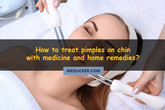
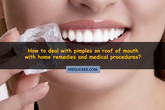
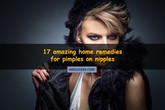
Ache in left arm that you should not ignore
Alkaline water dangers: why you should not drink it
How to Avoid Sleepiness While Studying?
23 Foods That Increase Leptin Sensitivity
Low dopamine (e.g. dopamine deficiency): causes, symptoms, diagnosis and treatment options
Swollen taste buds: the ultimate guide to causes, symptoms and treatment
Thin endometrial lining: causes, symptoms, diagnosis and treatment
Pimples inside nose: the complete guide
Holes in tonsils: definition, symptoms, treatment and prevention
How to deal with an ingrown hair cyst
Allegra vs. Zyrtec vs. Claritin
Allergy to penicillin and alternative antibiotics
How to get rid of phlegm (excessive mucus) in throat? Detailed guide to medical and home remedies, symptoms and causes
What causes stomach ache after meals?
Liver blood test results explained